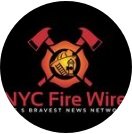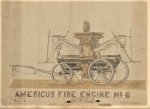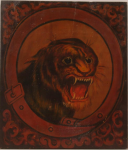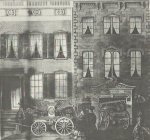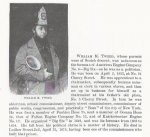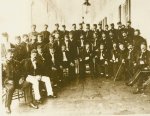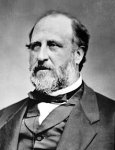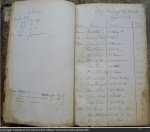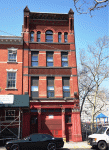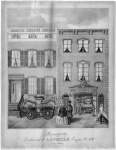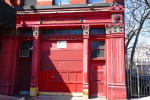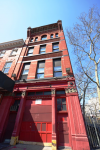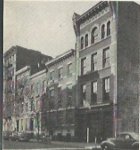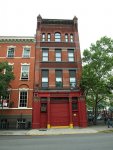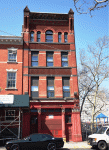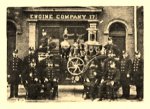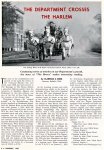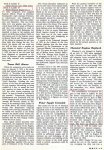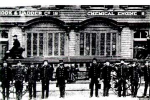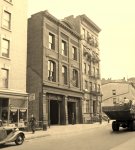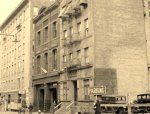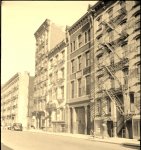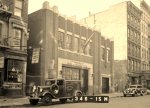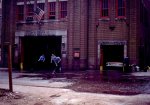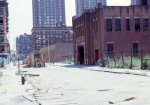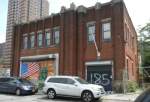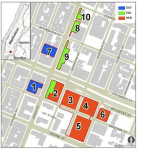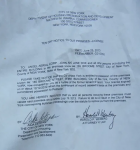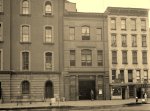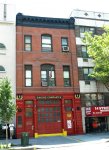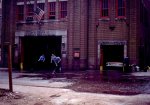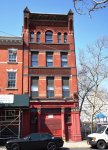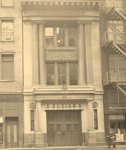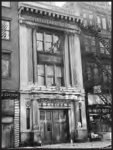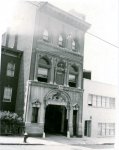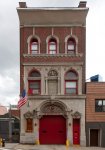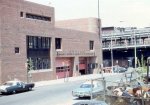ENGINE 15/LADDER 18/BATTALION 4 (ENGINE 17 DISBANDED) FIREHOUSE 25 PITT STREET LOWER EAST SIDE, MANHATTAN DIVISION 1, BATTALION 4 "FORT PITT"
1865 - PAID METROPOLITAN FIRE DEPARTMENT ESTABLISHED
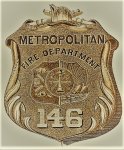
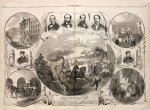
 THE FIRE DEPARTMENT.; Completion of the Metropolitan Fire Brigade of New-York. Difficulties in the Work of Reorganization. Catalogue of the City and Suburban Companies. Thirty-five Steam and Five Hand Engine Companies, and Fifteen Hook and Ladder Companies. THEIR ORGANIZATION AND LOCATION Present Condition of the Paid Fire Department. The Fire Telegraph System--The Board of Engineers. THE FIRE DEPARTMENT. SUBURBAN ORGANIZATION. MISCELLANEOUS MATTERS. NO MORE BELLS. STATUS OF VOLUNTEER FIREMEN. VOLUNTEER COMPANIES DISCHARGED.
THE FIRE DEPARTMENT.; Completion of the Metropolitan Fire Brigade of New-York. Difficulties in the Work of Reorganization. Catalogue of the City and Suburban Companies. Thirty-five Steam and Five Hand Engine Companies, and Fifteen Hook and Ladder Companies. THEIR ORGANIZATION AND LOCATION Present Condition of the Paid Fire Department. The Fire Telegraph System--The Board of Engineers. THE FIRE DEPARTMENT. SUBURBAN ORGANIZATION. MISCELLANEOUS MATTERS. NO MORE BELLS. STATUS OF VOLUNTEER FIREMEN. VOLUNTEER COMPANIES DISCHARGED.
Nov. 3, 1865
The organization of the Paid Fire Department is at last perfected, and the Fire Commissioners, being no longer perplexed with the duties pertaining to the work of changing from the old system to the new, will devote their energies to making the department thoroughly efficient and a credit to the city. That our readers may fully understand the subject, we present a detailed account of the new organization as it now stands.
The work of reorganization has been a task of no small dimensions for apart from the necessary amount of routine business coming before the board, they have been obliged to devote a large portion of their time to the examination into the capabilities of the old department, and to determine upon the best and most economical system for the new organization. The apparatus and hose had to be examined, and more and better provided; applications for appointments on the new force were to be carefully considered alterations to buildings were to be determined upon, and the financial basis of the entire department arranged. All these several duties occupied time, but the Board of Commissioners kept steadily at their work, and now they find the Paid Fire Department substantially complete, only one or two additional companies having yet to be organized. As at present arranged the new department will soon become compact and manageable, and no doubt seems to exist in the minds of those interested in the department of its final and complete success.
ORGANIZATION OF THE BRIGADE.
The entire force of the Metropolitan Fire Department consists of thirty-five steam fire-engine companies and twelve hook and ladder companies for the city proper. One hook and ladder and two engine companies are to be organized immediately. For duty in the suburban districts there will be five hand engine companies and two hook and ladder companies, and they are now organized under the direction of three assistant-engineers.
In the city organization each engine company consists of twelve members, a foreman, assistant-foreman, engineer, driver, stoker and seven privates. The hook and ladder companies have the same number of members, but not requiring an engineer or stoker, the privates are increased to nine men. To each steamer there is attached a tender. Each steamer and hook and ladder truck will be drawn by a powerful team of horses, and the tenders by one horse each, thus employing 129 horses. Each tender is provided with a reel capable of carrying one thousand feet of hose, and a fuel box calculated for three hours' consumption; in front of the tender is placed a wide seat for the driver and three men.
In the suburbs the companies consist of fifty members, and are not paid, a company fund being given them for incidental expenses, the machines being drawn by hand.
The down-town companies are governed by eleven assistant engineers, while the Chief-Engineer holds command over the entire department.
SALARIES.
The expenses of the department for salaries of the force will be as follows:
Chief-Engineer............................... $3,000
Eleven Engineers (each $1,200)................ 13,200
Three suburban Engineers (each $400)........ 1,200
Forty-seven foremen (each $800).............. 37,000
Forty-seven assistant foremen (each $750)..... 36,250
Thirty-five steam engineers (each $900)........ 36,500
Forty-seven drivers (each $700)................ 32,900
Thirty-five stokers (each $700)................. 24,500
Three hundred and fifty-three privates ($700)..247,100
Total....................................$426,250
Company funds for six suburban companies, ($1,000 each)................................ $6,000
Grand total..............................$432,250
THE WHOLE DEPARTMENT
Consists of a Board of Commissioners and the Board of Engineers, with forty steam, engine and thirteen hook and ladder companies. The following list comprises the officers of the department:
President of the Board -- CHAS. C. PINCKNEY.
Fire Commissioners -- MARTIN B. BROWN, PHILIP W. ENGS and JOSHUA G. ABBE.
Secretary -- CHAS. E. GILDERSLEVE.
Chief-Engineer -- ELISHA B. KINGSLAND.
Board of Engineers -- Joseph L. Perley, First Assistant; G.J. Orr, Eli Bates, Thomas Sullivan, William Shaunessy, Peter Y. Everett, Bernard Sheridan, Wm. Banham, Jr., W.M. Rhodes, John Conley, Joseph D. Coster.
Suburban Engineers -- Michael Halloran, Abraham Howe and John Hunt.
The working force of the brigade consists of the following divisions:
CITY ORGANIZATION
The following comprises the fire companies for duty in the city proper. Each company consists of twelve men. The total salaries of each engine company will be $8,750 per annum. Those of the hook and ladder companies will be $8,550 each:
Metropolitan Steam Engine Company No. 1, (with horses.) -- WM. CORGAN, foreman, in Park-walk.
Metropolitan Steam Engine Company No. 2, (with horses.) -- ROBT. ROBERTS, foreman, No. 304 West Forty-seventh-street.
Metropolitan Steam Engine Company No. 3, (with horses.) -- JOHN MCNEIL, foreman, in West Seventeenth-street.
Metropolitan Steam Engine Company No. 4, (with horses.) -- THOS. MCCAULEY, foreman, No. 39 Liberty-street.
Metropolitan Steam Engine Company No. 5, (with horses) -- DAVID B. WATERS, Foreman, No. 186 East Fourteenth-street.
Metropolitan Steam Engine Company No. 6, (with horses) -- JOSEPH J. MALLEN, Foreman, No. 100 Cedar-street.
Metropolitan Steam Engine Company No. 7, (with horses) -- JOSEPH POYNTON, Foreman, corner of Chambers and Centre streets.
Metropolitan Steam Engine Company No. 8, (with horses) -- JOHN H. VAN TASSELL, Foreman, No. 106 East Fifty -- first-street.
Metropolitan Steam Engine Company No. 9, (with horses) -- STUART CARSON, Foreman, No. 55 East Broadway.
Metropolitan Steam Engine Company No. 10, (with horses) -- JOHN BATTERSBERRY, Foreman, No. 28 Beaver-street.
Metropolitan Steam Engine Company No. 11, (with horses) -- JULIAN C. HARRISON, Foreman, No. 437 East Houston-street.
Metropolitan Steam Engine Company No. 12. (with horses) -- JAMES OATES, Foreman, William-street, near Pearl.
Metropolitan Steam Engine Company No. 13, (with horses) -- J.F. GIRAUD, Foreman, No. 99 Wooster-street.
Metropolitan Steam-Engine Company, No. 14 (with horses) -- W.H. WILSON, Foreman, No. 15 East Eighteenth-street.
Metropolitan Steam-Engine Company, No. 15 (with horses) -- JAS. LITTLE, Foreman, No. 269 Henry-street
Metropolitan Steam-Engine Company, No. 16 (with horses) -- WM. SANDBEG, Foreman, No. 109 East Twenty-fifth-street.
Metropolitan Steam-Engine Company, No. 17 (with horses) -- ROBT. V. MACKEY, Foreman, No. 91 Budlow-street.
Metropolitan Steam-Engine Company, No. 18 (with horses) -- W.H. HOUSNER, Foreman, No. 26 West Tenth-street.
Metropolitan Steam-Engine Company, No. 19 (with horses) -- STEPHEN MITCHELL, Foreman, No. 227 West Twenty-fifth-street.
Metropolitan Steam-Engine Company, No. 20 (with horses) -- HUGH BONNER, Foreman, No. 47 Marion-street.
Metropolitan Steam-Engine Company, No. 21 (preparing for horses -- JAS. B. HUNT, Foreman, No. 142 East Fortieth-street.
Metropolitan Steam-Engine Company, No. 22 (preparing for horses) -- JOHN B. DUNHAM, Foreman, Eighty-fifth-street, near Third-avenue.
Metropolitan Steam Engine Company No. 23, (preparing for horses) -- HENRY A. LINDEN, foreman, Sixty-eighth-street, near Tenth-avenue.
Metropolitan Steam Engine Company No. 24, (preparing for horses) -- W.H. WARD, foreman, No. 84 Morton-street.
Metropolitan Steam Engine Company No. 25, (with horses) -- JOHN ALLEN, foreman, No. 148 East Fifth-street.
Metropolitan Steam Engine Company No. 26, (preparing for horses) -- W.M. MITCHELL, foreman, No. 138 West. Thirty-seventh-street.
Metropolitan Steam Engine Company No. 27 -- (with horses) -- LUKE A. MURPHY, Foreman, No. 171 Franklin-street.
Metropolitan Steam Engine Company No. 28 -- (preparing for horses) -- WM. DONNELLY, Foreman, No. 211 East Eleventh-street.
Metropolitan Steam Engine Company No. 29 -- (drawn by hand) -- ARNOT SPENCE, Foreman, temporarily at No. 300 Washington-street, to go to No. 193 Fulton-street, and obtain horses.
Metropolitan Steam Engine Company No. 30 -- (preparing for horses) -- WM. SIMPSON, Foreman, No. 253 Spring-street.
Metropolitan Steam Engine Company No. 31 -- (preparing for horses) -- PETER WEIR, Foreman, No. 116 Second-street
Metropolitan Steam Engine Company No. 32 -- (Drawn by hand) -- WILLIAM BUCKLEY, temporarily at No. 18 Burling-slip.
Metropolitan Steam Engine Company No. 33 -- (Preparing for horses) -- HENRY M. VANWORT, Foreman, No. 226, Mercer-street.
Metropolitan Steam Engine Company No. 34 -- (Preparing for horses) -- WM.P. DANIELS, Foreman, No. 286 Thirty-third-street.
Metropolitan Steam Engine Company No. 35 -- Not yet organized.
Metropolitan Hook and Ladder Company No. 1 -- (With horses) -- WM. BRANDON, Foreman, No. 28 Chambers-street.
Metropolitan Hook and Ladder Company No. 2 -- (With horses) -- A.J. BRADY, Foreman, corner of Fiftieth-street and Lexington-avenue.
Metropolitan Hook and Ladder Company No. 3 -- (With horses) -- JAMES TIMONEY, Foreman, No. 78 East Thirteenth-street.
Metropolitan Hook and Ladder Company No. 4 -- (With horses) -- MICHAEL SYNDER, Foreman, corner of Forty-eighth-street and Eighth-avenue.
Metropolitan Hook and Ladder Company No. 5 -- (With horses) -- CHARLES O. SHAY, Foreman, No. 96 Charles-street.
Metropolitan Hook and Ladder Company No. 6 -- (With horses) -- ABRAHAM C. HURD, Foreman, No. 180 Clinton-street.
Metropolitan Hook and Ladder Company No. 7 -- (Preparing for horses) -- ROBERT KING, Foreman, No. 119 East Twenty-eighth-street.
Metropolitan Hook and Ladder Company No. 8 -- (With horses) -- GEO. W. QUACKENBUSH, Foreman, No. 159 Franklin-street.
Metropolitan Hook and Ladder Company No. 9 -- (Preparing for horses) -- WM. ROE, Foreman, No. 195 Elizabeth-street.
Metropolitan Hook and Ladder Company No. 10 -- (Drawn by hand) -- WM.H. BOWLES, Foreman, temporarily at No. 28 Ann-street, going to No. 193 Fulton-street.
Metropolitan Hook and Ladder Company No. 11 -- (Preparing for horses) -- C.H. REYNOLDS, Foreman, No. 548 East Fifth-street.
Metropolitan Hook and Ladder Company No. 12 -- Not yet organized.
It will be seen that there are one hook and ladder and one steam engine company yet to be organized. These companies are now under consideration, and in all probability they will be placed in service by the 10th. The proper localization of the companies appears to be the cause of the delay, as the board wish to put these additional machines where they are most needed. As regards the localization of the companies now in active service, the utmost care has been exercised, so as to divide the duty properly and at the same time afford all necessary protection to property. Fault has been found with the Board of Commissioners because they have removed one of the steamers from Ann-street, and fears are expressed that the change will prove dangerous. We learn that the reason of the changes in locality was the difficulty of ingress and egress to and from that already crowded street. The railroad now running through Ann-street makes the risk great. In case of a fire in that neighborhood help will be found speedily at hand, as steamers now are at Fulton and adjacent streets, and can be brought up speedily.
As already stated, the Board of Metropolitan Fire Commissioners have organized a system of fire companies for the uptown districts. Each company will consist of fifty members, and in lieu of regular individuals compensations the organization to have a company fund of $1,000 per annum. So far there have been organized seven of these out-of-town companies. Harlem is now complete, as are likewise Manhattanville, Yorkville, Bloomingdale and Carmansville. Those organized are as follows:
Metropolitan Hand Engine Company No. 36 -- ROBT. C. BROWN, in Fourth-avenue, between One Hundred and Twenty-sixth and One Hundred and Twenty-seventh streets, Harlem.
Metropolitan Hand Engine Company No. 37 -- G.B. Foreman, in One Hundred and Twenty-second-street, between Second and Third avenues, Harlem.
Metropolitan Hand Engine Company No. 38 -- JOHN HAY, Foreman, in Eighty-fifth-street, between Third and Fourth avenues, Harlem.
Metropolitan Hand Engine Company No. 39 -- JNO. E. POOLE, Foreman, in Lawrence-street, between Ninth and Tenth avenues, Manhattanville.
Metropolitan Hand Engine Company No. 40 -- WM. HARRIS, Foreman, at Carmansville.
Metropolitan Hook and Ladder Company No. 13 -- CYRUS T. FROST, Foreman, in Eighty-seventh-street, near Third-avenue, Harlem.
Metropolitan Hook and Ladder Company No. 19 -- MICHAEL MCDERMOTT, Foreman, at Carmansville.
Among the proposed improvements in the department is a contract just completed by the board for ten second-class steam engines, of the Amoskeag pattern, the whole number to be ready for delivery next March. The department will then contain twelve new second-class and three first-class steamers. Thirty thousand feet of hose is now in process of manufacture, and will be soon delivered. The uniform of the firemen while on duty consists of a dark blue suit of pilot cloth, red flannel shirt, and the old fire helmet. On ordinary occasions the members will wear a neat forage cap, of a similar pattern to the navy cap, with glazed cover. In front of the cap will be embroidered the initials "M.F.D.," and the number of the company. Each member is required to be in uniform at all times, except when excused. The engineers will wear a white helmet, with gilt front, and on their forage cape is embroidered the word "Engineer," in the form of an arch, and the letters "M.F.D." beneath. The design is neatly made of gold bullion, similar to the style worn by Captains of police. The engineers are also constantly in uniform.
The men appointed on the force are of first-class character, every one an experienced fireman in the old volunteer department, several of the old assistant engineers now serving as foremen. The condition of the apparatus is also first-class, every machine being put into the best of running order before it left the shop. Improvements in several of the steamers have been introduced while in progress of alteration. The appearance of the houses is also good, for the alterations necessary for the new system caused many important changes for the better. Every man has his tedding and everything necessary for cleanliness and comfort. The horses provided for the companies are of the finest description of draught animals, and their appointments are in perfect keeping.
Very soon there will be a complete revolution in fire-alarm system. Instead of the bell-towers and their attendant ringers, the city will be watched by a telegraph system, at once simple and complete. Each fire company will form a telegraph station, in direct communication with the central office at Firemen's Hall. Each station will have a number, and in each station will be placed an alarm-box. In case of a fire occurring, the foreman or acting foreman of the company nearest its location pulls a knob, and so sounds the number of his station. On receipt of the alarm at headquarters the operator pulls another knob controlling every station in that district, and so gives the exact locality of the fire. If, for instance, "No. 4" is sounded at the central office, that number is at once communicated to every company liable for duty, and the plan is so simple that no mistake can possibly occur. Police stations remote from engine-houses will also be made regular stations, but in general the police will be notified by the firemen. In some, cases, of course, the police telegraph will be of use, but the fire alarm, will be relied on as a general rule.
It may be well to mention in this connection that the board have fixed upon the status of volunteer firemen, and by resolution have determined that the term "good standing" shall be construed and mean only those persons who were members of the New-York Fire Department on the 30th day of March, 1865, and who have performed at least fifty per cent. of fire duty, as the same may appear from the company's roll from July 1, 1865, to Sept. 15, 1865, who are free from all charges, and who were not members of any company which has withheld any property belonging to the City of New-York in use by said company, or permitted the same to be injured, defaced or destroyed. This will effectually stop any attempts by delinquents to obtain honorable discharges.
The following companies, comprising the entire old Volunteer Department, have been relieved from duty, and the members in good standing will be discharged as soon as the necessary blanks are ready:
Engine Companies. -- Hudson No. 1, Excelsior No. 2, Forrest No. 3, Protection No. 5,
Americus No. 6, Lexington No. 7,
Manhattan No. 8, Marion No. 9, Water Witch No. 10, Oceanus No. 11, Knickerbocker No. 12, Eagle No. 13, Columbia No. 14, Marion No. 18, Lafayette No. 19, Washington No. 20, Fulton No. 21, Protective No. 22, United States No. 23, Jackson No. 24, Cataract No. 25, Jefferson No. 26, Washington No. 27, Guardian No. 29, North River No. 80, Peterson No. 31, Black Joke No. 33, Pete Masterson No. 32, Howard No. 34, Columbus No. 35, Harry Howard No. 36, Tradesman No. 37, Southwark No. 38, Lady Washingington No. 40, Clinton No. 41, Empire No. 42, Manhattan No. 43, Live Oak No. 44, Aurora No. 45, Valley Forge No. 46, New-York No. 47, Mazeppa No. 48. Pocahontas No. 49, Mutual No. 51, Undine No. 52, Hudson River No. 53, Niagara No. 4, Chatham No. 15, Mo. hawk No. 16, East River No. 17, Pacific No. 28, Franklin No. 39.
Hose Companies. -- Niagara No. 2, Independent No. 3, Marion No. 4, Edwin Forrest No. 5, Croton No. 6, Ringgold No. 7, City No. 8, Columbian No. 9, Liberty No. 10. Jackson No. 13, Atlantic No. 15, Tompkins No. 16, Clinton No. 17, Franklin No. 18, American No. 19, Humane No. 20, Hudson No. 21, Phoenix No. 22, Perry No. 23, United States No. 25, Neptune No. 27, Pearl No. 28, Metamora No. 29, Laurel No. 30, Putnam No. 31, Crystal No. 35, Oceana No. 36, Madison No. 37, Mohawk No. 39, Empire No. 40, Alert No. 41, Mazeppa No. 42, Pioneer No. 43, C.G. Gunther No. 45, Americus No. 48, Lady Washington No. 49, Hope No. 50, Relief No. 51, Harry Howard No. 55, Nassau No. 56, M.T. Brennan No. 60, Zephyr No. 61, Eagle No. 1, Gulick No. 11, Washington No. 12, Excelsior No. 14, Naticnal No. 24, Rutgers No. 26, Warren No. 33, Amity No. 38, Washington Irving No. 44, Mechanics, No. 47, Manhattan No. 59.
Hook and Ladder Companies. -- Mutual No. 1, Chelsea No. 2, Eagle No. 4, Union No. 5, Mechanics No. 7, Empire No. 8, Washington No. 9, C.V. Anderson No. 10, Harry Howard No. 11, Friendship No. 12, Columbian No. 14, Baxter No. 15, Liberty No. 16, Hibernia No. 18, Phenix No. 3, Lafayette No. 6, Marion No. 13, John Decker No. 1
1866 - METROPOLITAN FIRE DEPARTMENT PARADE

